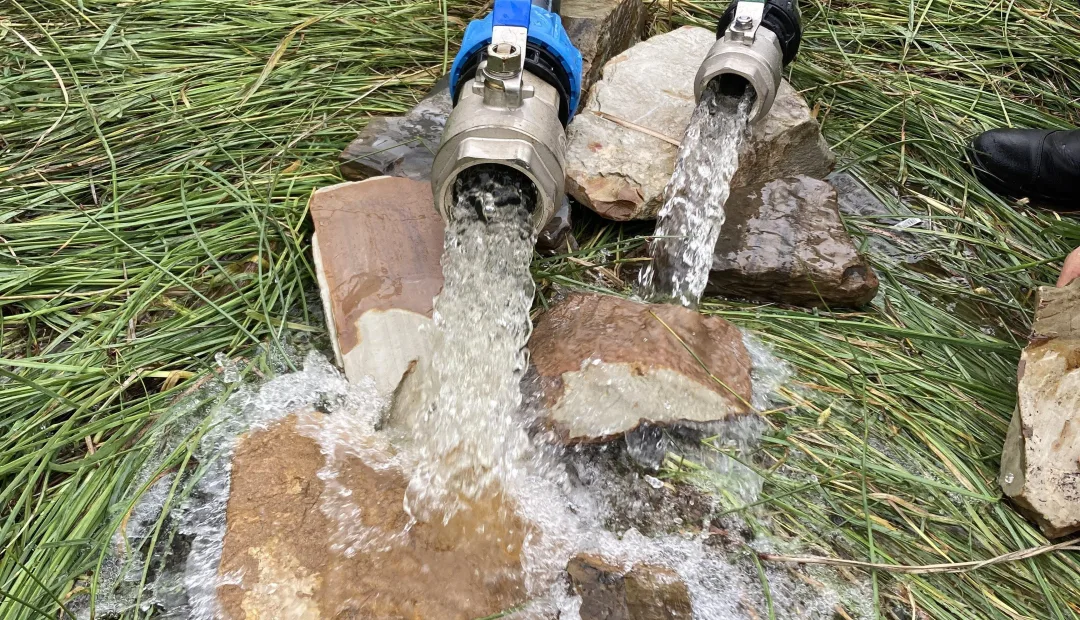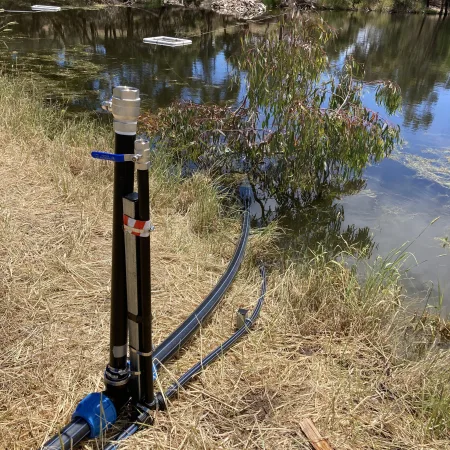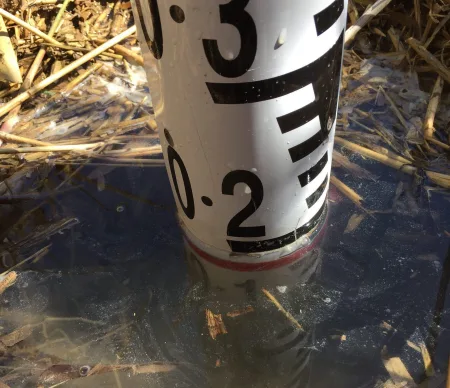Published:
Author:
The 2010 and 2015 Aquatic Ecosystem Condition Reports deemed that the water quality and ecosystem health of the majority of Eastern Mount Lofty Ranges (EMLR) sites as being in Poor or Fair condition.
Flows for Future (F4F) aims to improve the condition of the system by addressing the reduced duration and availability of critical low flows in the EMLR and Marne Saunders catchments and return long-term average annual flow volumes to the River Murray and Lower Lakes.

The essence of Flows for the Future
‘Let it flow, let it flow, let it flow!’ is the catchcry of the Flows for the Future (F4F) team.
One of the biggest causes of deteriorating catchment health in the EMLR is the absence of crucial early season low flows. F4F seeks to re-establish this critical portion of natural water flow patterns in systems affected by water capture in the EMLR, thereby supporting long-term sustainability for communities, industry and the environment.
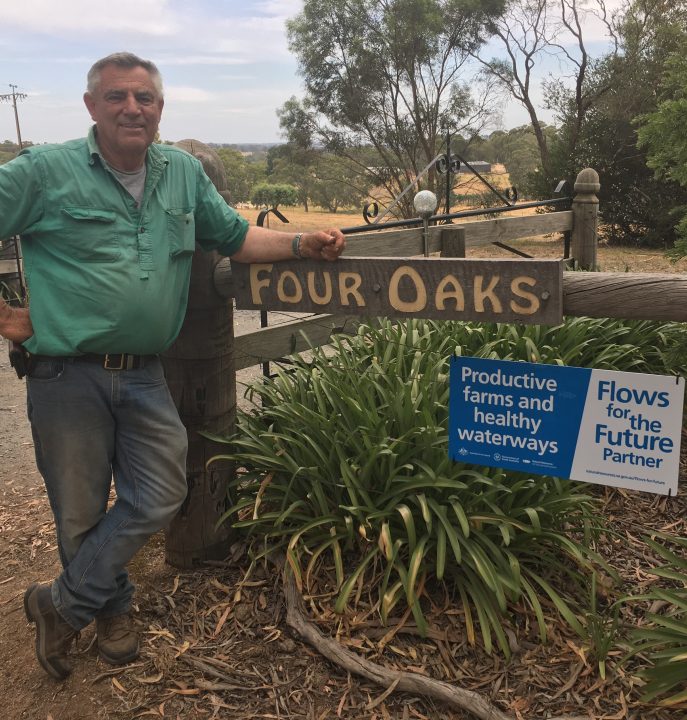
F4F expands on knowledge gained from the 2015–16 Securing Low Flows project delivered in the Mount Lofty Ranges, and has been built on supportive relationships with landowners, valuing community knowledge, acknowledging the importance of voluntary contributions and shared ownership in pursuing solutions to improve catchment health. The team works closely with communities to share knowledge of issues and impacts affecting the ecology, habitat, biodiversity, and water quantity and quality in the EMLR.
Flow regimes in the EMLR have transformed over many years in response to land use changes, construction of dams and installation of watercourse diversions. While the productivity of the region is an asset to the community and the state, changes to the landscape have impacted ecological processes and catchment health to the point where sustainability of the quantity and quality of the region’s water resources is at risk. Dams in particular, while crucial for water security, prevent water from passing downstream when it is needed for wetting riparian soils, replenishing pools and stimulating migration and breeding events in aquatic animals.
F4F focuses on providing real solutions to reinstate flows, particularly early and late season flows (‘low flows’), which are of critical importance to the system’s ecological function. By passing low flows around dams and other flow barriers, F4F can make a tangible difference to sustaining environmental functions, without compromising landowner water security.
At present, F4F is actively passing low flows at more than 400 sites across the EMLR, with significant improvements in the small flow contributions to early and late season flows. Many more sites have also been identified for low flow device installation.
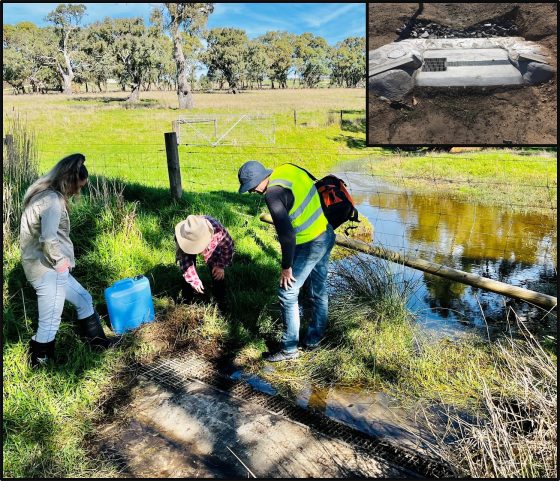
Returning flows to catchments
There is no ‘one-size-fits-all’ approach to passing low flows, as every property differs in its rainfall, topography and catchment characteristics. It requires tailored solutions to allow low flows of water to pass around dams and back into the downstream catchment during natural flow periods (eg rainfall, runoff, etc). Installing the right device allows low flows, at or below the calculated threshold flow rate (TFR), to pass dams and watercourse diversions while medium and high flows continue to fill the dam or be extracted from a watercourse.
One of the methods F4F uses to pass low flows is the installation of a gravity low flow device. The device is installed above a dam and allows flows, up to a certain TFR, to flow passively downhill and around the dam via a trenched pipe, while medium and high flows are still captured. The amount of water passed around the dam is regulated by an orifice, sized according to the upstream catchment area. For most dams, there is little change to annual water storage volume as a result of device installation.
Gravity low flow devices have been operating successfully across South Australia for more than 20 years, with F4F contributing markedly to the number of operational devices and their improved functionality.
Another method being investigated by F4F for passing flows in the EMLR is siphon system infrastructure. Based on initial concepts from a Western Mount Lofty Ranges (WMLR) trial underway at Inman Valley, siphon systems offer flexibility and can be manually operated with environmental flow release schedules to release water from a dam in more complex settings where gravity low flow devices may not be suitable. F4F works closely with landowners to customise siphon systems and environmental flow release schedules for individual dams in different catchments.
In addition to gravity low flow devices and siphon system infrastructure, watercourse gauge boards (indicating site specific TFR) can be installed at licensed extraction sites to guide the timing of extraction so that low flows are not captured for licensed take. Existing weirs, pump offtakes and sluice gates that divert flow from watercourses can also be modified to allow low flows to continue downstream, while maintaining availability of medium and high flows for extraction.
Learning by doing
The beauty of working with people and nature is that no 2 sites or situations are alike, and there are always lessons to learn and surprises around the corner.
The construction of low flow devices at such a large number of sites throughout the EMLR has led to rapid learning and improvement in processes and final products. Siphon trials at Glenthorne National Park have paved the way for a new approach to complex sites, and valuable insights and ideas have come from land managers and contractors.
F4F innovations include:
- data driven decision making through the use of modelling to determine the most effective minimum combination of sites to treat in sub-catchments
- development of new designs for passing flows at complex sites
- identification of policy gaps
- collaboration between government, scientists, and community to deliver Basin Plan and water allocation plan outcomes.
Funding
Flows for the Future (F4F) is a $33-million joint initiative between the Australian Government and Government of South Australia, contributing to the adjustment of sustainable diversion limits (SDLs) as a ‘notified supply measure’ project under the Murray–Darling Basin Plan.
